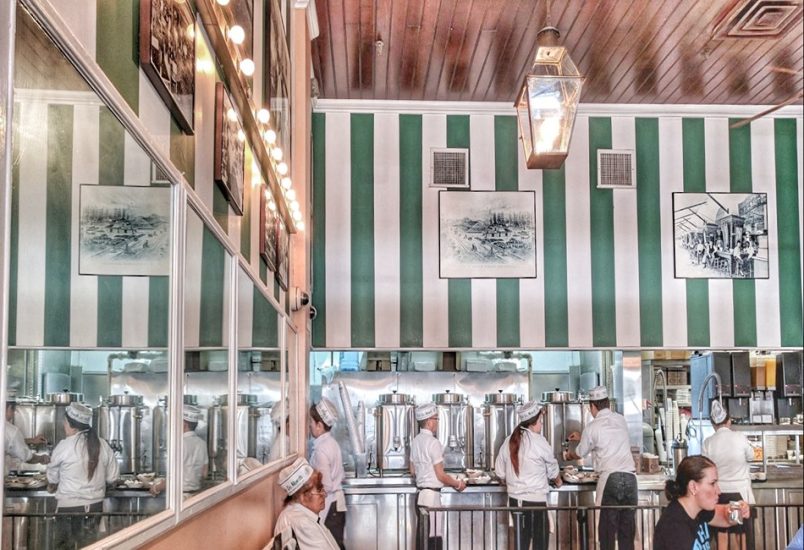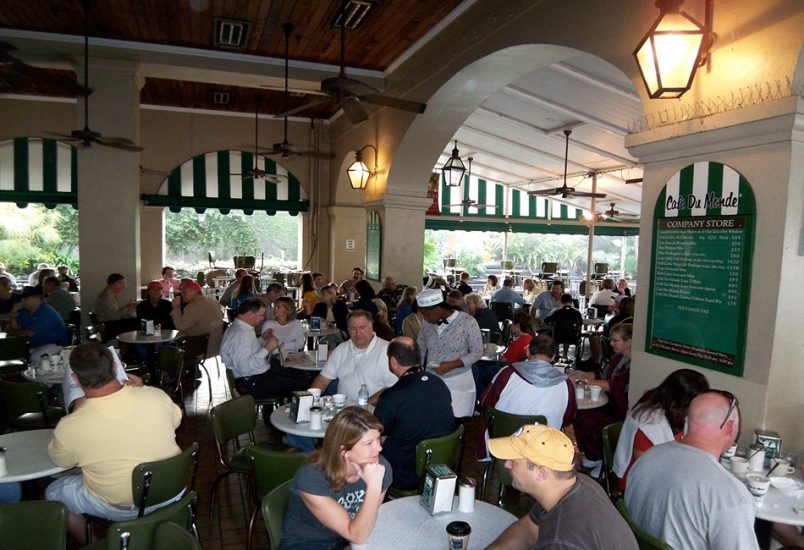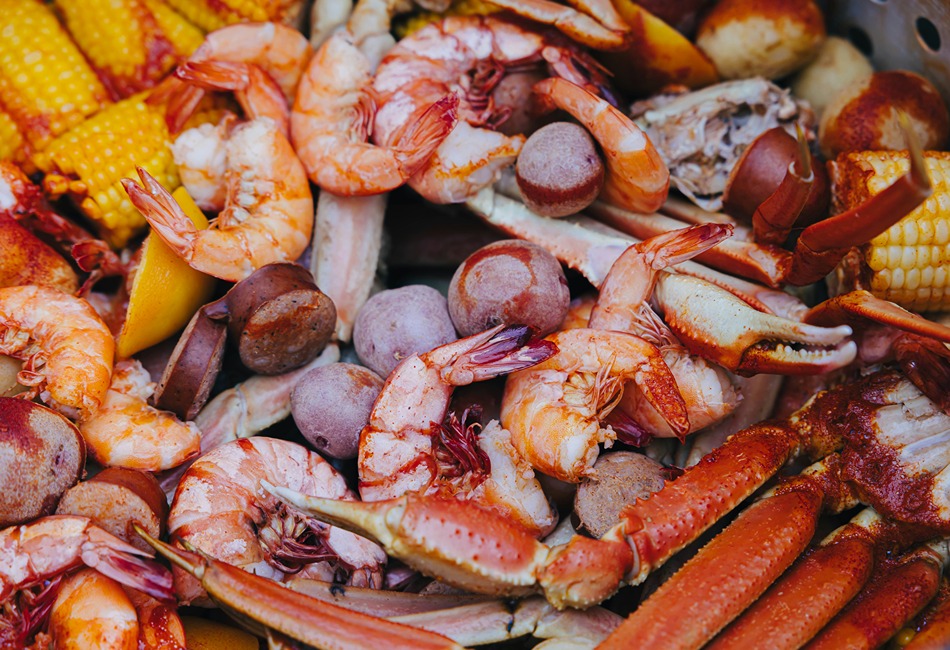From Gullah rice fields to New Orleans gumbo—plan a soul-stirring Southern road trip
By Madelyn Bugai
The South’s story is plated in gumbo, etched on lunch counter stools and carried by Gullah praise houses—each one a living archive of culture, resistance and tradition. From the Sea Islands of South Carolina to the jazz-filled streets of New Orleans, the region’s history buzzes with connections between food, tradition and music. This buzz is palpable in bowls of shrimp and grits, the mounds of powdered sugar atop a beignet and the sweet juice of a ripe peach. To journey through the South is to taste, hear and feel generations of Black culture.
For more travel ideas, you can Download the Magazine and Subscribe to Leisure Group Travel for FREE
South Carolina–Rice, Resistance & Rich Gullah Roots
The Gullah Geechee Corridor, stretching along the coastline of South Carolina from the Sea Islands of the Lowcountry to the northern border, preserves culinary traditions rooted in West African tradition. Enslaved people from the “rice coast” brought rice, okra, benne seed and millet—often hidden in women’s braids—to America during the transatlantic slave trade.
Gullah dishes are hearty and savory, built on grains, leafy greens, slow-braised vegetables and local seafood such as shrimp, crab, oysters and fish. Signature meals like Hoppin’ John, garlic crabs, red rice and okra soup reflect a rich blend of African and Southern influence. Experience Gullah Geechee culinary heritage at places like Bertha’s Kitchen in North Charleston, which locals say is “authentic, no frills southern cooking off the beaten path.” Find comfort in the fried chicken, turkey wings, lima beans and red rice—all served at a restaurant that feels like home.
Originally a simple Gullah Geechee breakfast, shrimp and grits are another South Carolina staple dish that has evolved throughout history. Traditionally, shrimp and andouille sausage are smothered in savory gravy and served atop cheesy grits to create the perfect low-country shrimp and grits. Try them at The Grit Counter in North Charleston for the ultimate grits experience.
For deeper insight, stop by the Avery Research Center for African American History and Culture at the College of Charleston to learn more about Gullah Geechee culture, as well as the history of African Americans in the Lowcountry. With a mix of digital exhibitions, changing galleries and permanent exhibitions, the Avery Research Center is dedicated to documenting the history, traditions and legacies of African Americans and their influence on American society, culture and narratives. To find more African American cultural sites in South Carolina, make sure to download the Green Book of SC app.

Louisiana–Creole Flavor and Cultural Fusion
Louisiana is known for its iconic culture built upon music, festivals and unforgettable food like gumbo, jambalaya and beignets. Each dish brimming with the authentic flavors of Louisiana’s Creole cooking. This style highlights the cultural fusion and edible history that defines Louisiana’s identity.
Creole cuisine, born in New Orleans, is a conglomerate of French, Spanish, African, Caribbean, and Native American flavors and techniques. Developed by people from various cultures converging in New Orleans, Creole cuisine thrives on complexity, layering ingredients like tomatoes, okra, seafood and spices in dishes like Creole gumbo. This cultural amalgamation saturates not just the food, but the city’s music, language and activities. Check out our Mealtime Serenades article to see where to dine in New Orleans where food and music intersect.
The notable Creole dessert—the beignet—diverges from the typical complex flavor profile of Creole cuisine. Beignets, usually served in threes, are sweet, soft, light, and covered with powdered sugar. Introduced to New Orleans by French Acadians in the 1700s, beignets quickly became adopted into home-style Creole cooking. Despite their French origin, beignets are a New Orleans staple breakfast food, often enjoyed with friends and family alongside a good coffee. The oldest coffee shop in New Orleans, Cafe Du Monde, is one of the most iconic places to enjoy sweet beignets with a nutty, chicory coffee.
Beyond the plate, Louisiana’s culture buzzes with music, festivals, Voodoo and unique languages like Louisiana Creole and Cajun French. From museums to Mardi Gras, Louisiana life teems with heritage, resilience and celebration.
The Tremé neighborhood—the oldest African American neighborhood—is known for its rich African American and Creole heritage that permeates the sights, bites, music and activities. Take a tour through the Tremé neighborhood to enjoy live music at Congo Square or The Broadside, delve into history at the Backstreet Cultural Museum or New Orleans African American Museum and taste local favorites like Dooky Chase’s legacy bowl of gumbo.

Alabama–Sweet Home, Strong Roots, & Sizzling Catfish
Sweet Home Alabama is more than just a phrase—it captures the essence of a state known for its landscapes, hospitality and vital role in American history. The Birmingham Civil Rights Institute transports visitors back in time to the 1950s by offering an immersive exploration of segregation through nearly 500 recorded oral histories, replicas of a Freedom Riders bus and the actual jail cell door where MLK wrote “Letter From Birmingham Jail.” About an hour away is Selma’s Edmund Pettus Bridge, the place where the 1965 “Bloody Sunday” march catalyzed the Voting Rights Movement.
Alabama’s cuisine also tells stories from the past. Enslaved people were often left to survive on what they could find, catch, grow or forage. Catfish, abundant in local lakes, became a vital food source that could be cooked in large quantities. Cooking and sharing catfish fostered community, endurance and cultural expression.
In and around Birmingham, fried catfish can be found at many restaurants served along with soul food sides like hushpuppies or greens. Jake’s Soulfood Cafe in Hoover offers a Southern Catfish plate that’s hearty and flavorful. Back in the city, Saw’s Soul Kitchen delivers a twist on the iconic dish by grilling instead of deep-frying their catfish.
If your travels take you closer to the Gulf, be sure to stop by Cozy Brown’s Kitchen. Not only do they have a variety of catfish dishes to choose from, they also serve chitterlings—a savory meal made from the intestines of pigs with origins in the ingenuity of enslaved cooks. While not commonly found in restaurants, chitterlings serve as a symbol of African American culinary history and resilience.
For more travel ideas, you can Download the Magazine and Subscribe to Leisure Group Travel for FREE

Georgia–Peaches and Power
When surrounded by the slow-paced, sweet-tea-sipping charm of Georgia, it’s important to remember the complex legacy behind its most iconic foods. Georgia peaches aren’t just a sweet fruit or the staple ingredient in an excellent peach cobbler—they’re a reminder of how Black labor impacted the culture and economy of Georgia.
The history of Georgia peaches are deeply rooted into slavery and its aftermath. After the Civil War, Georgia began growing peaches to distance their state’s association with slavery. Despite this motivation, orchards were labored by Black people under Black Codes and Convict Leasing. These laws and systems policed Black people and forced the incarcerated to be treated like slaves.
In Savannah, the Ralph Mark Gilbert Civil Rights Museum tells local stories of struggle and resistance, highlighting the city’s role in the fight for equality. The city’s rich history and architecture are a reminder to visitors that Georgia’s beauty often comes layered with grit, resistance and survival. Check out our Savannah Georgia Itinerary to ensure you experience all of what the city has to offer.
Travel into urban areas like Atlanta and you’ll be surrounded by a culture that is unapologetically Black. Known as the “Black Mecca,” Atlanta is a hub for music, Black entrepreneurship and political power. It’s the birthplace of trap music, a vital location in the Civil Rights Movement and the resting place of Dr. Martin Luther King Jr. The King Center, located in the heart of ATL, stands as both a memorial and a call to action, preserving the legacy of a leader who challenged the nation’s beliefs.
If you’re hungry for more than just history, Atlanta is home to thousands of Black-owned restaurants that serve staple dishes like peach cobbler and hot-sauce wings. B&L Wings is a great place to try iconic wings, with over 15 different wing flavors to choose from. Ranging from Spicy Mango Orange to Mild Lemon Pepper, B&L Wings is sure to have a wing flavor for anyone. Trap Wingz ATL is another exceptional option, having been consistently ranked among Atlanta’s top 3 wing spots annually from 2020 to 2023. For a sweet treat, stop by Ms.Ruby’s Peach Cobbler Cafe for some peach cobbler where “it’s as if someone’s grandmother or auntie is in the kitchen, singing a mass choir song and infusing the soul into the food.”

North Carolina–Trails of Truth & Tables of Soul
Eastern North Carolina houses a self-guided heritage trail that features over 30 stops called the African American Experience of Northeast NC. Dotted with outdoor interpretive signs and monuments, parks, waterways and museums, the trail connects sites like the 1867 Historic Jarvisburg Colored School, the Pea Island Cookhouse Museum and the Mariners’ Wharf.
Launched on Juneteenth, the trail tells stories from the Underground Railroad, Civil War emancipation and early Black education.
On the other side of the state, Charlotte shines as a hub for Southern Black cuisine. Soul food restaurants, like world renowned Mert’s Heart & Soul, Nana Morrison’s Soul Food and La’Wan’s Soul Food are all local spots known and loved for dishes like fried chicken, collard greens, mac and cheese and shrimp and grits. Diners Drive-Ins & Dives star, Guy Fieri, raved about Mert’s, stating that “When you come to Charlotte North Carolina, you gotta try some Low Country and he hears that Mert’s is the Joint to try it at.”
Tapas bar, Soul Gastrolounge, is set to reopen in spring/summer 2025, springing excitement among locals and dedicated foodies. In a similar vein, over 30 new venues are set to open between 2025 and 2026, featuring soul-inspired cuisine that leans into Southern culinary traditions.
From historical sites that pockmark the East, to the memorable soul food that lives in the West, North Carolina invites visitors to explore the stories—and the food—that evolved the Black communities that reside there into what they are today.

Planning Tips
Best Seasons to Visit
- Spring (February to May): The ideal time to plan your trip to the South. The weather won’t be too hot or too cold, it’s the perfect time to attend festivals like the Hilton Head Gullah Celebration, the Original Gullah Festival, Mardi Gras and the New Orleans JazzFest.
- Fall (September to November): The weather is mild, there’s an abundance of festivals—many of which emphasize food because of harvest season—and fewer crowds because of the time of the year.
Booking Suggestions
- Reserve tours, passes and museums early to ensure availability. Many tours require advanced booking.
- Sign up for local workshops to experience other aspects of Southern African American culture. The Gullah Geechee are known for their sweetgrass baskets; sign up for a workshop to weave your own.
Supporting Black-Owned Businesses
- Shop and eat local. Visit local stores, restaurants, festivals and African American-led activities. The Green Book of SC app is a good place to find Black historical locations.
- Leave positive reviews, follow businesses on social media and recommend them to friends.
Explore the living legacies of African American history by tasting your way through the South. Whether you’re walking across Selma’s Edmund Pettus Bridge, savoring a bowl of gumbo at Dooky Chase’s or tracing heritage trails in Eastern North Carolina, each stop holds a story worth recognizing.
For more travel ideas, you can Download the Magazine and Subscribe to Leisure Group Travel for FREE





